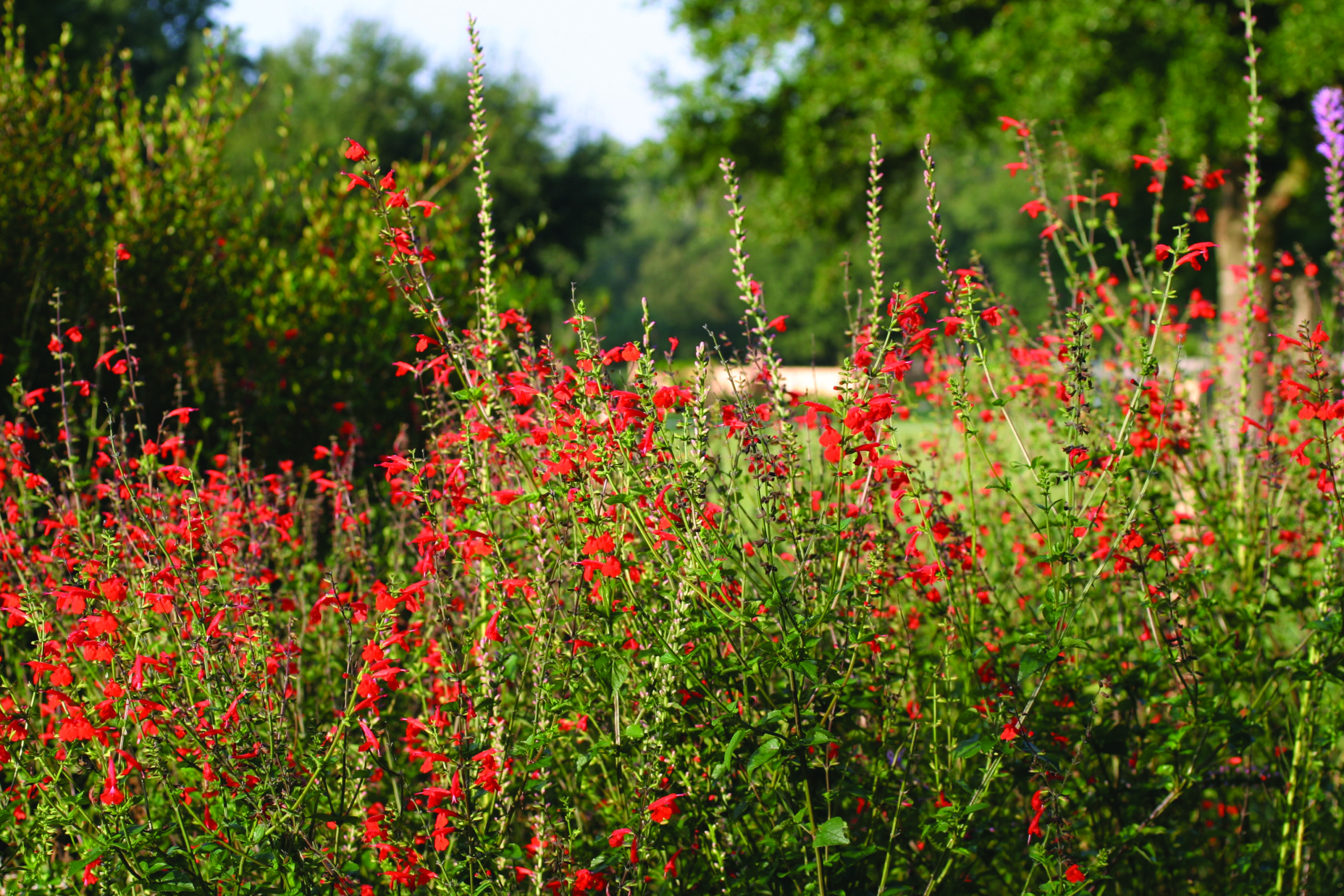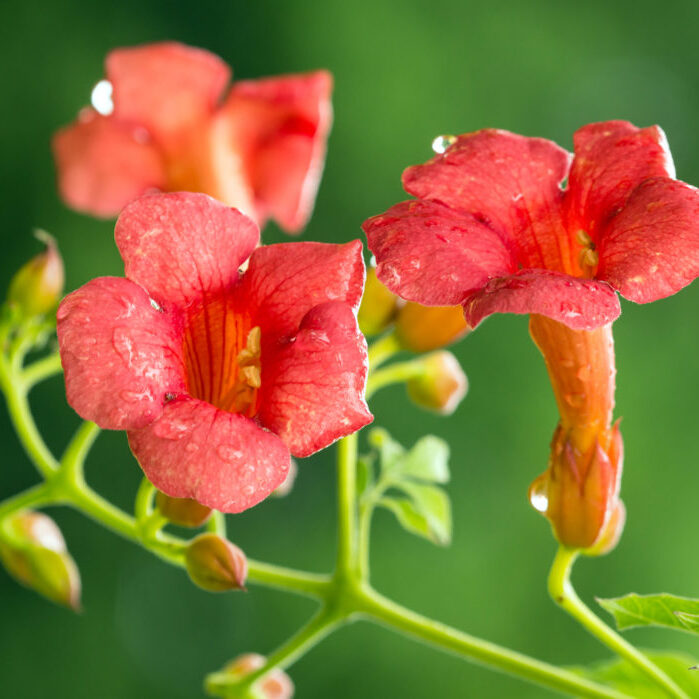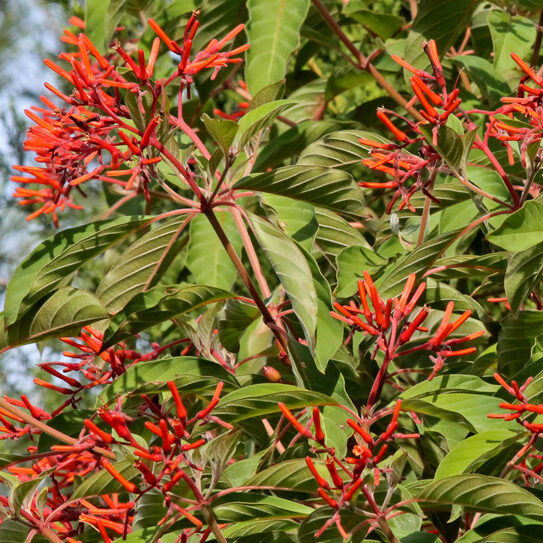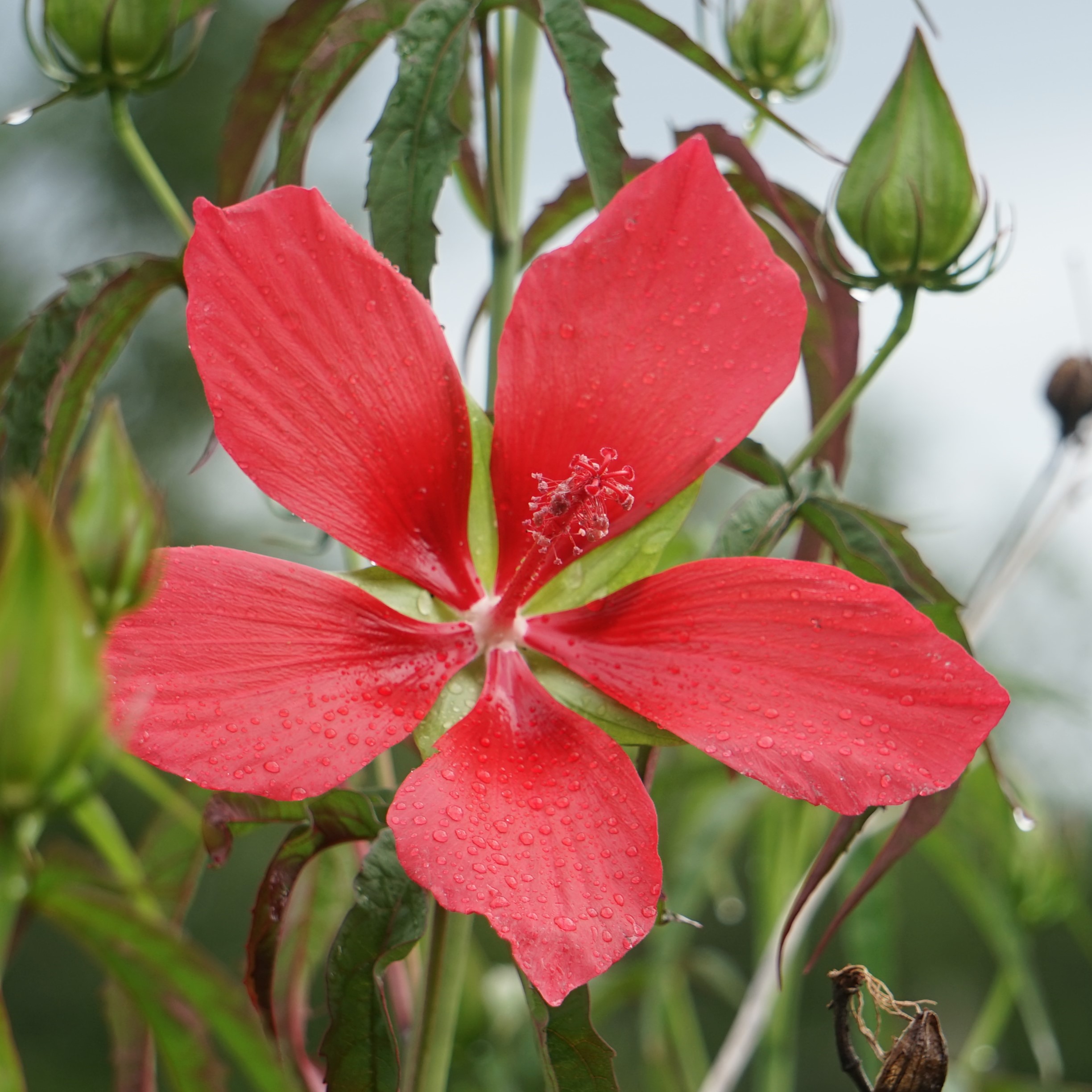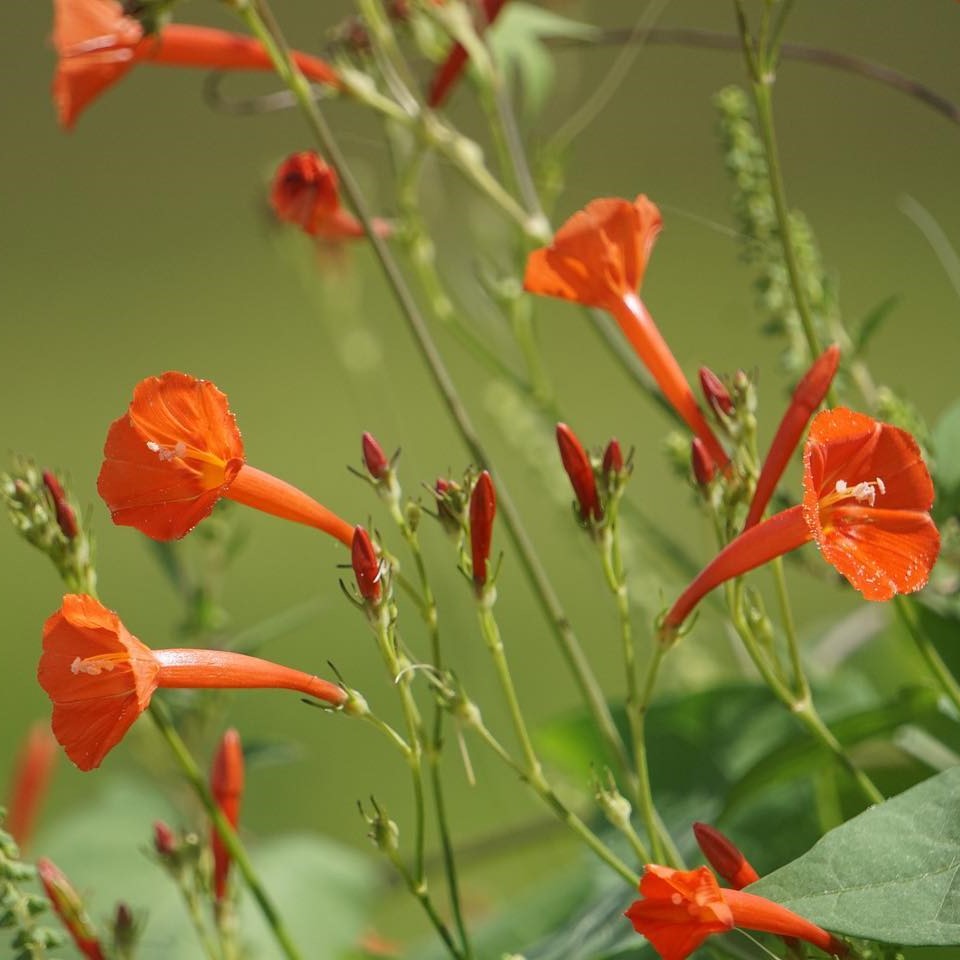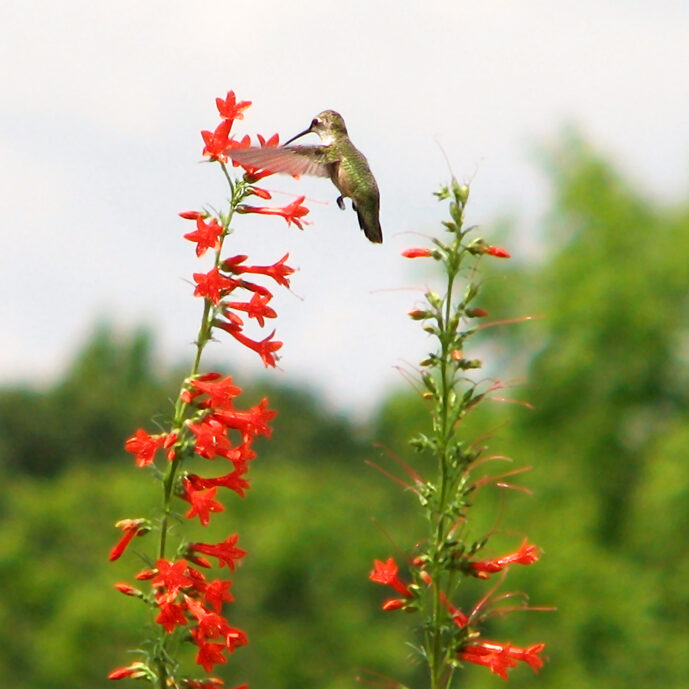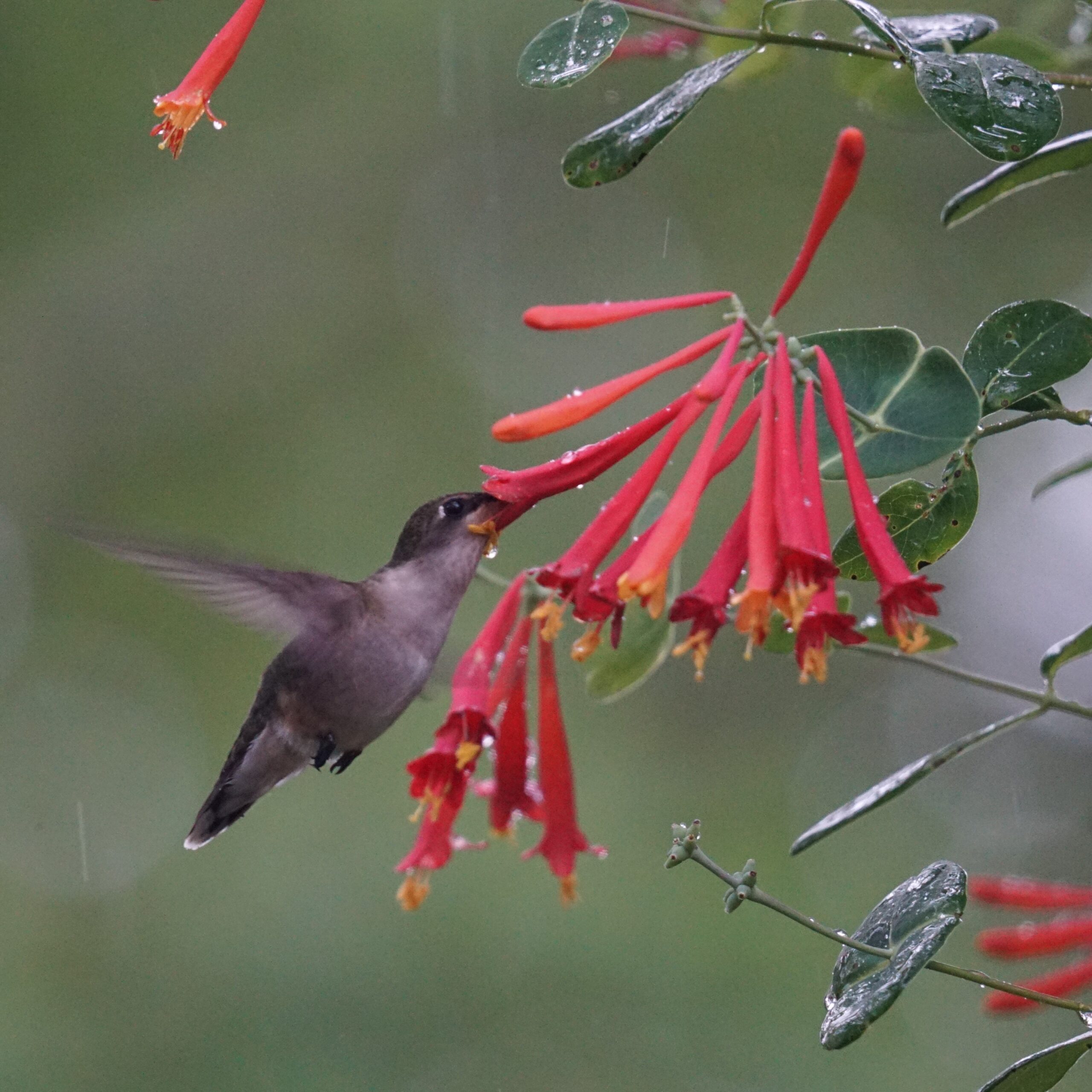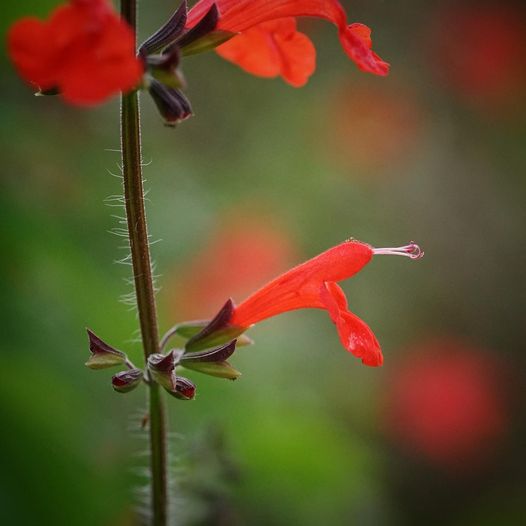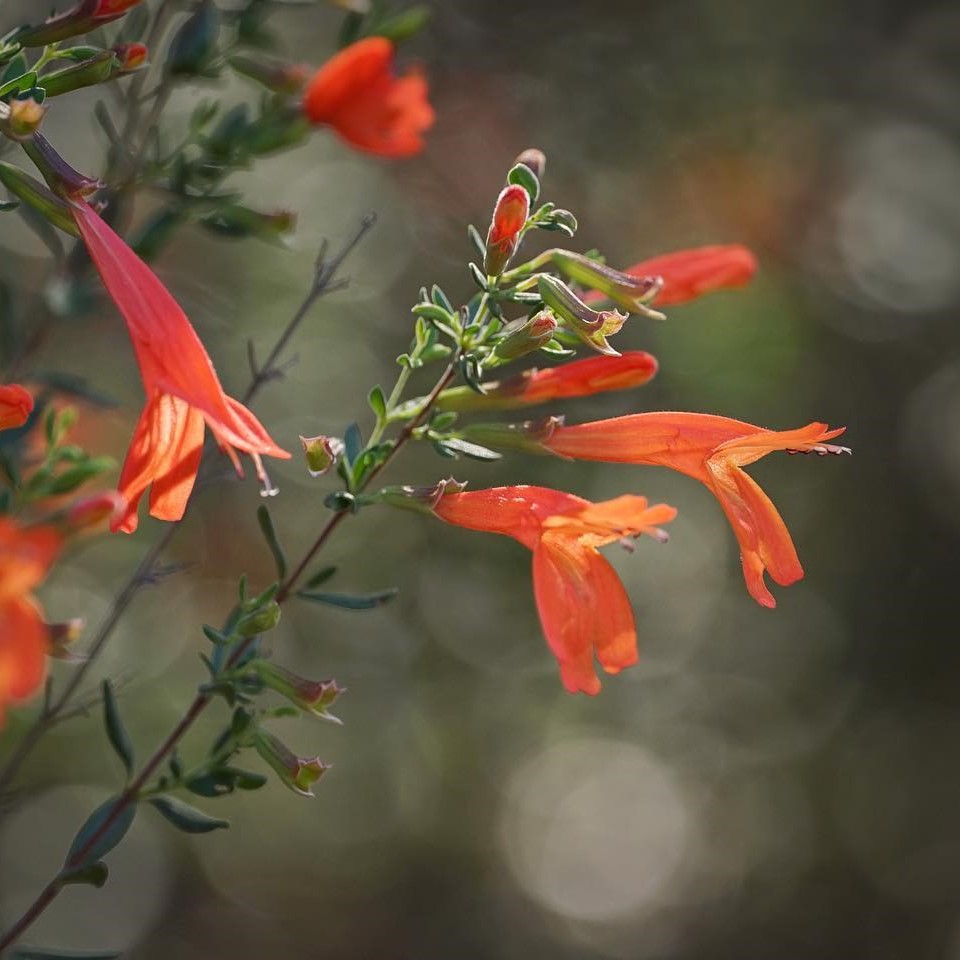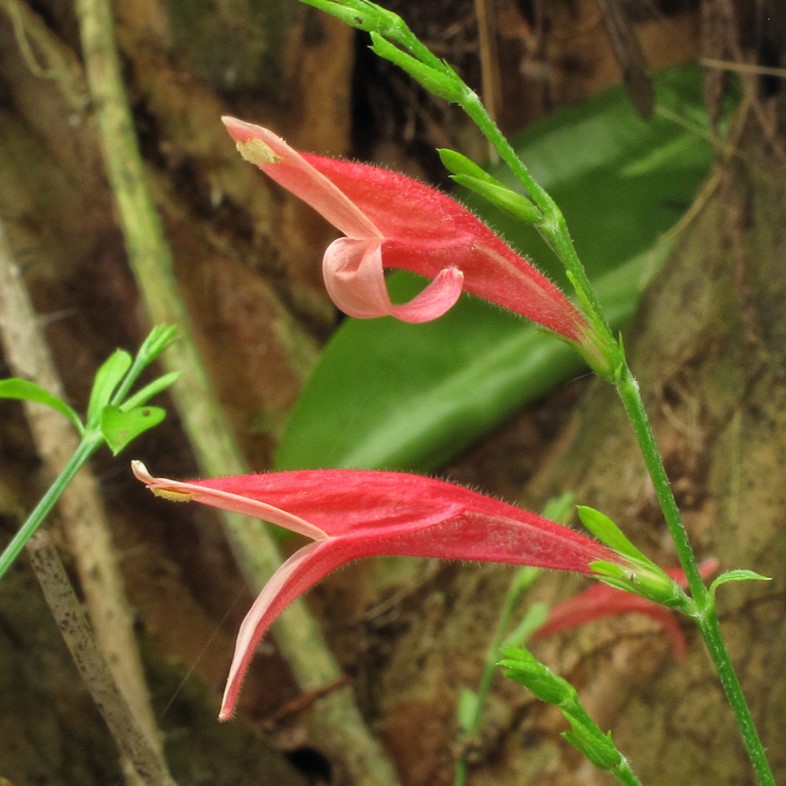Bloom Report: When seeing red is a good thing!
Pictured above: Tropical sage (Salvia coccinea) courtesy of Springer Environmental
Our Summer Bloom Report from Jeff Norcini, PhD will have you seeing red in the most beautiful way:
Vibrant red native wildflowers will brighten up your landscape, and those with tubular flowers will attract hummingbirds (and butterflies, too). Hummingbirds are delightful to watch as they dart and dive, slowing down only to feed or to rest on a branch. If you see a hummingbird flitting around in your yard, more likely than not it’s a Ruby-throated hummingbird, the most common hummingbird east of the Mississippi River. (The only other one I’ve seen in my yard is the Rufous hummingbird.)
The Florida native wildflowers listed below are all known to attract hummingbirds with their red tubular flowers:
All bloom in the summer, with some blooming much longer as flowering season may start earlier and/or end later in the southern part of a plant’s range.
Trumpet creeper (Campsis radicans)
- Fast-growing, often aggressive vine
- Suitable for use in North and Central Florida
- Climbs by aerial roots; will climb to the top of trees 50 to 60 feet tall
- Flowers spring and summer
- Perennial, but deciduous where frosts/freezes occur
- See also:
- 6- to 12-foot tall evergreen shrub
- Suitable mainly for Central and South Florida; can be used in North Florida, but will die back in a hard freeze.
- Flowers year round (mid- or late spring to fall if it dies back); best flowering occurs in full sun.
- Perennial
- Calusa firebush (Hamelia patens ‘Calusa’) is a 3- to 8-foot-tall native cultivar. The dwarf cultivar Hamelia patens var. glabra is not native.
- See also:
Scarlet hibiscus (Hibiscus coccineus)
- 5- to 8-foot-tall upright plant
- Suitable for use throughout Florida
- Flowers spring through summer
- Flowers are not tubular when fully in bloom, but are very showy; each is 4 to 8 inches in diameter.
- While it naturally occurs in moist to very wet sites, it will perform well in slightly moist sites.
- Typically, an herbaceous perennial, but can be semi-woody in South Florida.
- See also:
Scarletcreeper (Ipomoea hederifolia)
- Twining vine (requires support such as a trellis or fence)
- Suitable for use throughout Florida
- Flowers summer through fall
- Annual; sustains itself by re-seeding.
- Flowers resemble those of the non-native Cypressvine (Ipomoea quamoclit).
- See also:
Standing cypress (Ipomopsis rubra)
- 3 to 4 feet tall and narrow
- Suitable for use in North and Central Florida
- Grows best in sandy, alkaline soils; plant is disease-prone in loamy soil.
- Flowers mainly in July and August
- Biennial, but can be an annual in Central Florida
- See also:
Coral honeysuckle (Lonicera sempervirens)
- Twining vine (requires support such as a trellis or fence)
- Suitable for use in North and Central Florida
- Typically flowers mid- to late spring until mid- to late fall in the Panhandle; may bloom year round in Central Florida. Best flowering occurs in full sun to high pine shade.
- Perennial, but usually deciduous where frosts/freezes occur
- See also:
Tropical sage (Salvia coccinea)
- Upright 2 to 4-ft tall plant for all of Florida
- Flowers mid-late spring (where it dies back in winter) to fall; otherwise anytime of year
- Annual (where frost/freezes occur) to short-lived perennial, will spread by seed
- In North Florida, frost flowers may form on the dead stems in winter.
- See also:
Scarlet calamint (Calamintha coccinea)
- 1 to 4 feet tall and shrubby
- Suitable for use in North and Central Florida
- Flowers mid-spring to mid- or late fall
- Short-lived perennial that can be deciduous where frosts/freezes occur
- Not typically available from native plant nurseries and can be difficult to establish. Visit a natural area to see it.
- See also:
Sixangle foldwing (Dicliptera sexangularis)
- 1 to 4 feet tall; use in coastal area understory
- Suitable for use in Central and South Florida
- Flowers mid-spring to early fall, may flower year round in South Florida
- Perennial
- Not typically available from native plant nurseries. Visit a natural area to see it.
- See also:
Other native wildflowers that attract hummingbirds can be found by searching the word “hummingbird” on the Foundation’s website. To attract other birds to your landscape, check out Attracting Birds with Florida’s Native Wildflowers.

